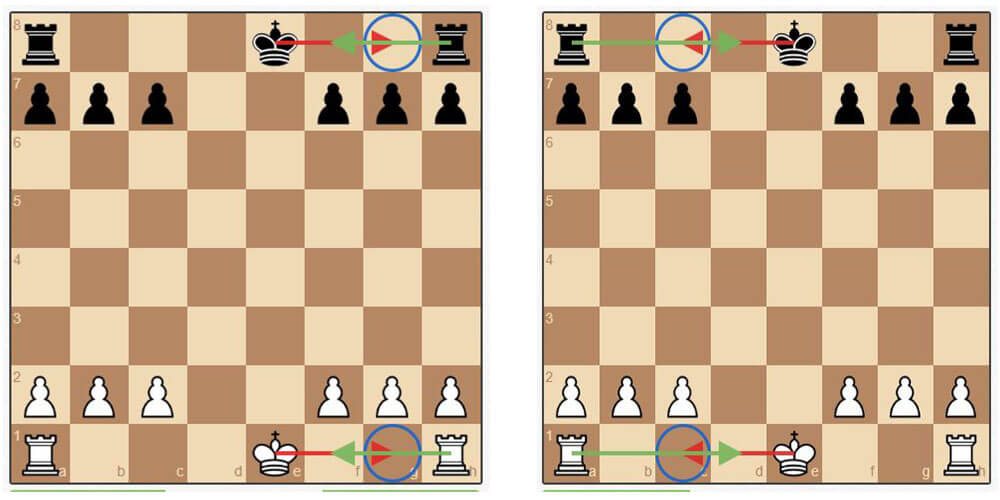If you are willing to play chess you have to know how do pieces can make moves on the chessboard. But if you are willing to win a chess game, you have to understand some very important rules. This context is mainly focusing on one of those important rules which is known as chess castling.
In most chess games, players are following this rule and it makes the game more interesting and exciting. The players must try to achieve certain aims from the beginning of the game such as occupying the center, developing the pieces, and ensuring the safety of the king. Castling is a rule that helps to facilitate the attainment of all the above aims.

If the player is able to understand the fundamentals of castling, he will be able to comfort the above aims as well. Though castling is a very special rule, it is not much difficult to understand compared to other important rules.
In simple terms, Chess castling is about changing the positions of both the King and Rook at once. Already you might be aware of how the king can make moves; a single square for all the directions. In chess castling, the king can move two squares horizontally and the Rook is having the ability to jump over the King.
More specifically, Chess castling is the only time that a player can move two pieces at once. There are two types of castling as King-Side castling and Queen-Side castling. Let’s understand both of these in-depth.
King-Side Chess Castling
In this method, both the king and the rook are moving their positions at the kingside. At the side of the opening team, the king moves to g1 from e1 while the rook moves to f1 from h1. For the opposing team, the king moves to g8 from e8 and the rook holds the corresponding movement.
Queen-Side Chess Castling
This is also operated in a similar mechanism to the king-side castling but the direction is flipped to the queenside. But in this case, the distance between the king and the rook is greater than the previous scenario.
Due to this reason queen-side castling is often known as “long-castling”. At the side of the opening team, the king moves to c1 from e1 while the rook moves to d1 from a1, and the opposing team (black) moves correspondingly. Queen-Side castling should be done very carefully because its position changing is a bit confusing.
What are the Conditions that Should be Satisfied for Chess Castling?
- Condition #1: There should not be any pieces in between King and Rook.
- Condition #2: Both the King and Rook must not be moved earlier before the castling can be applied.
- Condition #3: The rule cannot be applied if the King is currently been checked.
- Condition #4: The King cannot move through a square that has been attacked by a piece of the opponent.
- Condition #5: If a player needs to castle, the player should pick up the king first.
Why do You need to Castle in Chess?

If we consider the entire chess game it represents an attack between two empires. The fights of the teams are toughly happening at the middle part of the board. The primary goal of the chess game is to protect the king while attacking the opponent.
But according to the alignment of the pieces in the game, the king is directly facing the middle part of the board.
On other hand, A powerful piece, “rook” is blocked by its location at the end. While the game is moving forward, it is very hard for the rooks to come out and fight.
Moreover, while the game is going on the player should ensure the security of the king. Castling provides comfort for both the above facts so that the rook can enter the middle part of the board and the king can be safe.
The player should be wise enough to apply to castling when the pieces are occupied in the optimum situation. If the wall of pawns is scattered within the board and the king is exposing to the opponent after castling, obviously it would not be a better time to castle.
Furthermore, it is not a wise idea to apply to castle if the king is already safe. It may drag the king into danger and it will lead the player to defeat.
Finally, special consideration should be done regarding castling. If both the players are castling one the king’s side and the other on the queen’s side, it is called as “opposite side castling”. This kind of scenario adds a bit of humor to the competition and only one player of the two players has an advantage.
If you are lucky enough to get the advantage, it is great! but It is better to be mindful to avoid these kinds of tangles. Sometimes chess castling maybe a chess blunder like in this example. So do chess casting at the right time.


